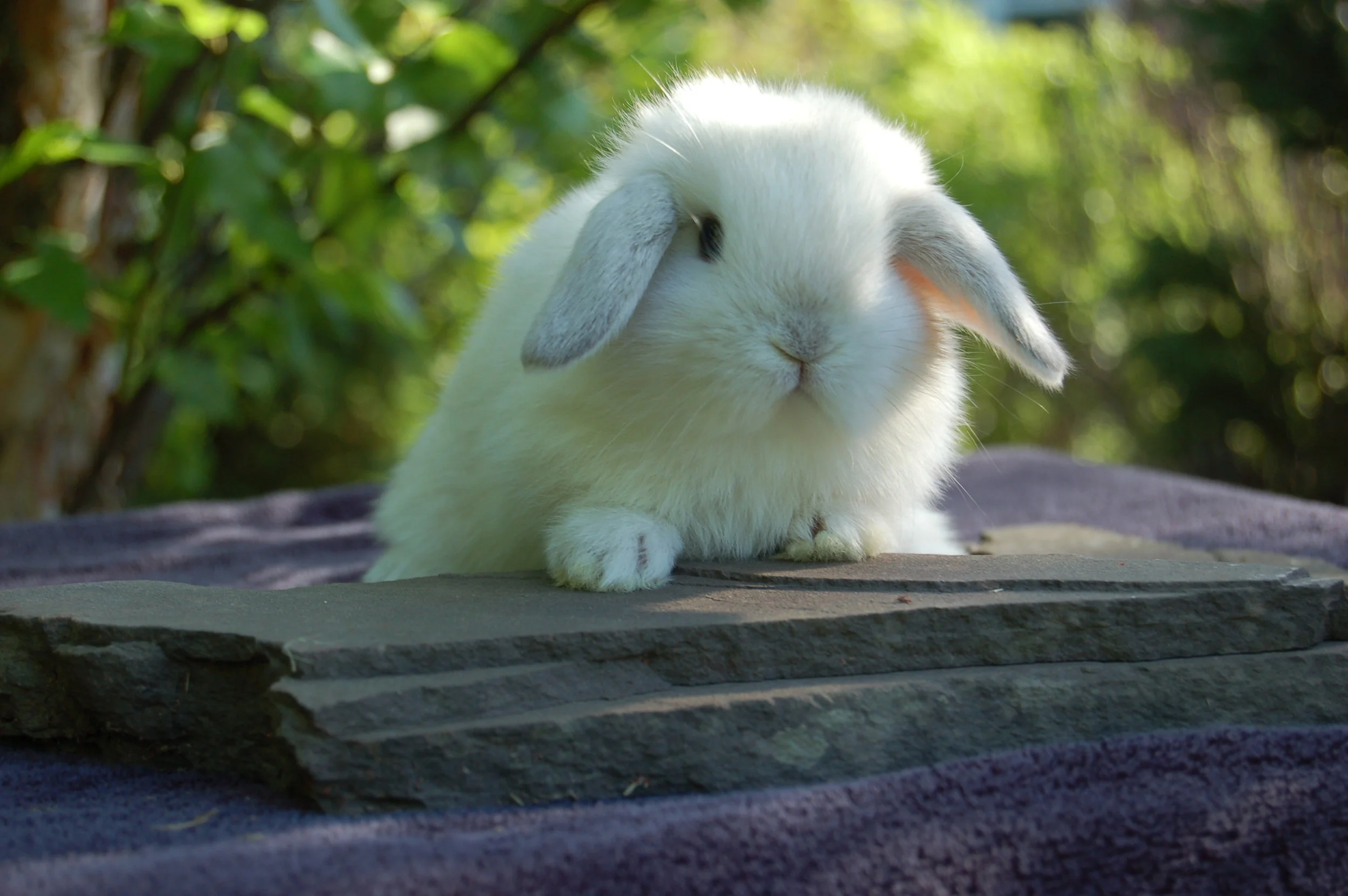Basics of Rabbit Genetics
What are Genes and Genotypes?
Ever wondered why your rabbit looks the way it does? Why one is black, and the other is brown, or one rabbit’s nape is orange and another’s white? These details are determined by each bunny’s genotype. Genotypes are a series of letters that represent the genes that color the fur of a rabbit. There are 5 main loci that every rabbit has: A, B, C, D, & E. A rabbit will receive two genes for each category from its parents, creating the color and genotype of your rabbit.
Why Learn Genetics?
Whether you have a rabbitry, just a few bunnies, or are thinking about breeding, genetics can be very useful to know. Using even a little bit of genetic knowledge, you can figure out what colors a pair of rabbits can produce and what genotypes those kits could have.
It also helps when you need to identify a rabbit's color. This can be difficult when colors get a little muddled, rabbits are molting, or when kits haven't grown their adult coat yet. If you know the bunnies pedigree, you can usually narrow down the possibilities quite a bit.
How do you figure out genotypes?
Step 1: Find the base genotype
Every color has a base genotype. These are the genes that affect the rabbit's color. For example, every chestnut has a base genotype of A_B_C_D_E_. The blanks show the recessive genes that can't be determined by just looking at the bunny. While recessive genes don't affect color, with the exception of c(chl) and c combinations, they do affect what kind of offspring the rabbit can produce. Depending on what information you can get from the pedigree, you can usually find some, if not all of the hidden genes. If not, breeding will be needed in order to identify them.
As an example, we will try to find the genotype of a blue tort rabbit. We can find its base genotype relatively easily by looking at it, but a quick google search will tell you as well. Since it has no ticking or white belly, we know it must be a self, making it's A genes aa. It lacks the rich brown of a chocolate based rabbit, so it's first B gene must be B, black based. You can also tell it is a full color rabbit, C, with all the hairs entirely colored, unlike a chinchilla or sable point. The dusty blue color identifies it as a dilute, dd. Lastly, because of the light brown, we know it non extension, ee. Put these genes together, and we come up with a base genotype, aaB_C_ddee.
Step 2: Use the pedigree to fill in the blanks
To complete the genotype, we need to find the recessive B and C gene. If the bunny's parents are a black tort and a REW with no chocolate in the pedigree or in the breeders breeding stock, it likely has another B gene. Because all REW have cc for C genes, we know that the blue tort must carry c, as that is the only gene it could have received from that parent. That would make its genotype aaBBCcddee.
Step 3: Use breeding to fill in the blanks
If the pedigree didn't provide enough information to figure out the entire genotype, we would need to breed the blue tort to find it. Say the blue torts sire was a sable point, rather than a REW. Then, the blue tort could carry c, c(h) or c(chl). To find out, we might breed her to a seal. If she produced any sable points, siamese sables, or other c(chl)c gened bunnies, we would know that she carries c or c(h). Otherwise, since the seal's C locus genes are c(chl)c(chl), all the kits would be either Cc(chl) or c(chl)c(chl).
Genetics can seem complicated at first, but once you get the hang of it, its easy! If you have any questions, feel free to contact me at bunnyjeans101@gmail.com


